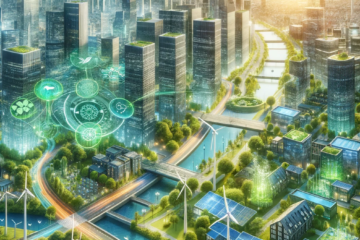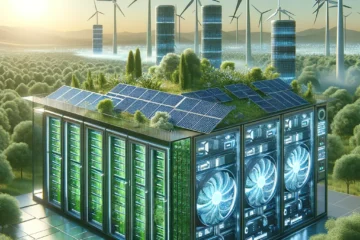In a world where technology is as ubiquitous as the air we breathe, the question of whether it’s a gentle breeze of sustainability or a gale-force eco-adversary looms large. As smart tech wraps its digital tendrils around our daily lives, we’re faced with an environmental riddle wrapped in a green conundrum. Let’s unpack the Eco Paradox that is the Internet of Things (IoT) and its enigmatic dance with energy. Plug in, power up, and prepare for a tale of modern efficiency that might just have a surprising twist.
Smart Tech: Eco Friend or Foe?
Whispering promises of a sleeker, more efficient world, smart tech devices are like the charming new neighbors on the block. But behind their shiny exteriors and helpful demeanors lies a question mark hanging over their green credentials. Are they the eco-friendly champions they claim to be, or are we inviting an energy-hungry wolf in sustainable sheep’s clothing into our homes? As fables of the future are written, smart tech’s true environmental impact is a tale yet to be fully told.
IoT’s Green Dilemma Unplugged
Dive into the heart of the smart revolution, and you’ll find the IoT, a bustling network of interconnected devices, from fridges to fitness trackers. It’s a digital ecosystem that breathes convenience and efficiency, but there’s a catch—the energy demands of this ever-growing web. The green dilemma is clear: how does one reconcile the rise of IoT with the pressing need to cut cords with carbon and energy extravagance? This is the riddle that keeps the eco-conscious awake at night.
Powering Up but Carbon Down?
In a world striving for renewable energy and lower emissions, IoT devices appear to be pulling us in two directions. On one hand, they streamline and reduce unnecessary energy consumption with smart, adaptive controls. On the other, the sheer number of devices and their need for constant connectivity can lead to an uptick in electricity use. It’s a high-wire act balancing power usage with carbon footprint reduction, and IoT is the tightrope walker in the spotlight.
Gadget’s Guilty Energy Secret
Tucked away in the fine print of the smart tech user manual is a secret—these gadgets, for all their intelligence, still sip on the sweet nectar of electricity. Often, the energy used to maintain their smart status, like keeping them in standby mode waiting for your next command, goes unnoticed. But those electric sips can become a gulp as more devices join the fray, turning the guilty energy secret into an open environmental conundrum.
Can Smart Devices Outsmart Waste?
Yet hope is not lost—smart devices have an ace up their sleeve. With the right programming and capabilities, they can reduce waste by learning our habits and adjusting to our needs with precision. Smart thermostats and lighting systems can dial down energy consumption to match human absence or inactivity. The potential for waste reduction is vast, but it hinges on the very intelligence that defines these devices. Can they truly learn to be the stewards of sustainability?
The IoT Twist: Saving More or Less?
And here comes the twist in our electrifying tale of IoT. In certain scenarios, this web of connected devices does more than just save us time—it saves energy. Picture a world where smart grids manage city-wide energy distribution with impeccable efficiency, where homes and offices are powered down to the whisper of a needed watt. The possibility of IoT being a net-positive for the environment is tantalizing, but it requires a symphony of innovation, regulation, and consumer awareness to truly make it a reality.
As we stand at the crossroads of convenience and conservation, it’s clear that the story of IoT and its energy impact is more complex than a simple binary of good versus bad. It is a narrative of potential, of hope, and of an impending twist. Whether smart tech will ultimately tip the scales towards a greener future or add weight to our current energy challenges remains to be written. But one thing is for certain: the journey to a smarter, more sustainable world is sure to be an electrifying adventure!




